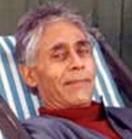
Shiva Sutras 3.1, 3.2 & 3.3 – Entanglement in Sense Impressions & the Subtle
Body
Shiva Sutra 3.1
Atma cittam
Atma cittam
describes the mind that has become entangled in the various sense impressions,
which make us believe that our individual egos are the ‘doers’ and that life is
about satisfying our endless desires for things, people and power. We forget
that we are the Oneness and this state of delusion leads to entanglement “in the
wheel of repeated births and death. [SLJ]”
Atma is the Sanskrit word usually taken to mean the Self, the individual soul
within each of us. The use of the word ‘soul’ is misleading in the context of
Indian thought. In the west we have been taught to believe that each of us has
an individual soul and when we die our unique-to-us soul goes to heaven or hell,
or even nowhere.
However the understanding of Atma in the Sanskrit texts is this: There is only
one Atma. There is only one soul. In the final, deepest, and ultimate level of
being, there is only one soul. Atma is the Oneness, God consciousness, which
takes on the temporal appearance of separation and limitation, to conceal and
reveal Its nature, and play in Time and Space
One root meaning of Atma is “to move constantly. Owing to primal ignorance of
its real nature…it moves on to various forms of existence. [Jaideva Singh]” The
Oneness has taken on the temporal ‘appearance’ of multiplicity as you and me and
endless diversity.
Citta is that “mind which is eternally saturated with the
impressions of sensual pleasures. This individual is attached to the three
intellectual organs – mind (manas),
intellect (buddhi), and ego
(ahamkara). [SLJ]”
***
Shiva Sutra 3.2
Jnanam bandah
Here we have forgotten our real nature, which is God consciousness, and have
fallen into the illusion that we are separate from the Oneness. This false
delusional state is the result of the three intellectual organs. Our intellect
selects what we might want, our mind tells us how we can get what we want, and
attachment to the results is produced by our ego – “I have done this. This is
mine.”
“For
this limited individual, all knowledge is bondage. [SLJ]” Deluded by our limited
intellectual organs, all knowledge is experienced as differentiated, and
therefore entangles us deeper and deeper into multiplicity, our self-created
temporal illusory hologram.
In the Bhagavad Gita XVI.13-15, Krishna describes the snares of egoistic
thinking: The deluded ones are strangled by 100s of nooses of expectation and
think ‘I have gotten this, this is mine, I will get my desires, I have slain my
enemies – who is equal to me?’ While the wise understand the mystery that he/she
is not the Doer.
Our subtle body
(puryastaka) is individual. As we move from one life to another we build and
add to our subtle body, which is the accumulation of all our various desires and
cravings deposited in it as residual traces
(vasanas) of our every thought,
desire, and act. It is this subtle body that we mistakenly identify with.
It is our subtle body that drags us into lifetime after lifetime to find a
suitable environment, a body to satisfy the as yet unfulfilled desires we are
attached to. We are magnetized to the specific frequencies that resonate with
the totality of our consciousness.
The experience of differentiated knowledge leads to
desires that entrap us in repeated births and deaths
(samsara). All desires eventually
lead to pain. Everything in this universe is temporal and comes to an end. Even
the rich, brilliant, and beautiful get old and die. Eventually we all lose
everything.
In the Bhagavad Gita V.22, Krishna tells Arjuna that
pleasures are born of sense contact, and are in reality nothing more than wombs
of pain (duhkha-yonayas); and because
they are temporal, not lasting, not eternal, the one who is wise is not attached
to these pleasures.
Swami Lakshmanjoo comments on this same verse to help us
understand how an enlightened yogi views pleasure: “…he thinks…these enjoyments
(bhogas) which are placed before me,
they are fine…I can have them; but I am not particular to have them. If they are
there, let them be there. If they are not there, well and good, I won’t have
them…I am not attached. [SLJ’s BhG]” The one who is enlightened does not think
he/she must have anything.
Here in simple language the idea of ‘non-attachment’ is illustrated for us. When
we achieve God consciousness, enlightenment, there is an inevitable detachment
from the drama of all things – the ‘coming and goings’ of the external world.
What do we need when we have become Everything?
The capacity for non-attachment is the natural outcome of being elevated beyond
self-created illusory delusions. We have moved beyond thinking we are our
current individual identity and our subtle body. We have become aware and
observe the mechanics that compel our attachment to unending webs of
entanglements. We are free from being “played and entangled by the wheel of
repeated births and deaths. [SLJ]”
***
Shiva Sutra 3.3
Kaladinam tattvanamaviveko maya
In Kashmir Shaivism we learn that when we experience the world as differentiated
multiplicity, we are consequently pushed further into delusional entrapments. We
descend. As long as we think that we are one with our body and God is not— then
our own senses, mind, intellect, and ego will draw our consciousness ever deeper
into the webs of bondage.
This movement down in consciousness is reversed when we realize the truth.
Finding God within you reverses this process. “And when you know that all bodies
are my bodies and all bodies are universal bodies and you know you possess a
universal body, knowing, ‘I am God,’ then you are truly elevated. [SLJ]”
It is as if we are stuck in a sort of cosmic elevator, a lift. Our confused
perceptions will cause us to descend into limited understanding. Going down.
Until we realize that we are one with everything, then our perceptions, the five
senses, the intellect, etc., will serve to enlighten us. We will perceive God
everywhere in all. Going up!
Swami Lakshmanjoo translates the Spanda Karika 1.20 thus: “For those who are
fully aware of God consciousness, organs of action and organs of the intellect
lead them to that supreme state of God consciousness. For those who are not
aware, these same organs deprive them completely of that God consciousness.”
These ‘organs’ are the instrumental mechanisms by which the Creator
intentionally binds Itself in Time and Space; they become the means of
Liberation once we realize they are just our own elaborate brilliant hidden
tricks. I often think of this as a switch. Either you are in God consciousness
and feel one with the world, or you are not and feel separate, insecure, and
fearful.
Real knowledge lies within. The God within you does not need to learn any
lesson, or to master algorithms and become a rocket scientist. The God within
already knows everything. The God within does not need to evolve, and is
ubiquitous thus there is nowhere to ascend to. The God within is now and always
All. Therefore shifting or switching our consciousness into ‘that’ which we have
always been, opens the door to the knowledge that liberates.
When knower and knowledge are one, the God within will reveal the eternal secret
to you. Until then we continue to live in MAYA’s energies of illusion - and MAYA
is “the personified will of the supreme will. [Vijnana Bhairava - SLJ]” God is
deluding Itself to enjoy playing as multiplicity.
God conceals Its real nature and then reveals Itself within each and every one
of us throughout the cycles of time. This universe is the Divine Play of God. We
are God! We forget.
 Swami
Lakshmanjoo
Swami
Lakshmanjoo
***
Bhagavad Gita, In the Light of Kashmir Shaivism, Chapters 1-6, revealed by Swami
Lakshmanjoo, edited by John Hughes; Universal Shaiva Fellowship, 2008.
The Bhagavad Gita, translated by Winthrop Sargeant; State University of New York
Press, 1994.
SPANDA-KARIKAS, The Divine Creative Pulsation, translated into English by
Jaideva Singh; Motilal Banarsidass Publishers, Delhi, 1980. 2005.
Vijnana Bhairava, The Manual for Self Realization, Revealed by Swami
Lakshmanjoo, edited by John Hughes; Universal Shaiva Fellowship, 2007.
|
|